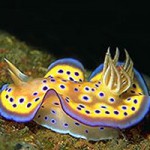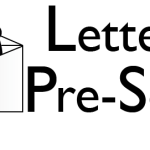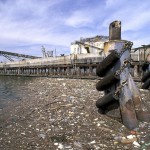Last Friday I delivered a preliminary talk on the opening night of ScienceOnline Oceans. I am extremely flattered by the invitation and the enthusiastic reception to my talk. Many asked me to post my slides online but I felt I needed to go a step further to provide more discussion, links, and points that an 10 minute presentation allowed. I want to thank the Deep-Sea News team, Kevin Zelnio (@kzelnio), John Bruno (@JohnFBruno), and Liz Neely (@LizNeely) for many important discussions. These people have influenced me more than words can say.
1. I come from ocean outreach from a perspective that is much different from others. I am first and foremost a scientist. One that completely believes in research but equally in outreach. I am scientist communicator. I also come from the perspective of building, with the help of many others, Deep-Sea News over the last 8 years. In these years we have had many failures and successes. I believe we have reached success. Our community is amazing. Our hit rate reached 1 million last year and is expected to increase well over 2 million this year. There is no indication that our popularity is tapering off.
2. Be Strategic. Be Deliberate. Coming from the perspective of a scientist, I often worry about finding time to do this. I also want to do this effectively. We have to be more deliberate and strategic in the way we approach outreach online. Otherwise we are wasting time. In October 2011, all of us at DSN converged on Atlanta to hold a DSN retreat. We collectively discussed our future. More importantly we discussed what we were trying to accomplish and the values that defined us. We implemented this new collective vision in late 2011/early 2012 and something magical happened. Our hit rate increased dramatically. We went from linear growth to exponential growth. Go back and look at slide two and you can see for yourself this amazing transition. It doesn’t matter what your mission is as long as you clearly define, understand, and work toward it. Otherwise you are wasting time.
3. Branding…Branding…Branding...This, and the point of above, may seem corporate or trite but they matter. At the retreat, we also decided to brand. As Lois Geller at Forbes states “In one sense, perhaps the most important sense, a brand is a promise…You know what you’re going to get with a well-branded product or service.” In this sense, you know you are getting at DSN. We have outlined it in the core values. Most importantly for me is our tone, reverently irreverent, and that it comes directly from the mouths of scientists. Of course, our brand is visualized in the giant squid with an eye patch. Why a giant squid? Because the giant squid can be a panda for the ocean. The eyepatch? Well this is DSN.
4. Find Your Niche and Story. This applies across scales to a social media collective, blog, and individual posts. Our brand, mission, and values are who we are. We are consistently these day end and out. But they are ours and they reflect a lot of who we are in non-online world. When I add new people to the our online collective that match our niche. Your niche and story may be different. And that of course is ok. Of course not everyone agrees with our unqiue approach. A recent comment on our blog
“This “oh-so-hip” presentation of a very interesting phenomenon is regrettable. I stopped reading halway [sic] through it as I couldn’t take any more. Just present the science. Tarting it up for people to read is pointless. Such readers have no value. Too bad, I would have liked to learn the real scinece [sic] presented here.”
I cannot disagree more with this commenter. Our “tarting it up” is a core value for us. I mean have they read DSN before? We make science accessible, relevant, current, and of course fun. You know what happens to science writing that isn’t these things? Nobody reads it. Readers, no matter their backgrounds and expectations, all have value. They pay the taxes that fund our research. We are part of the same community. Frankly, I don’t want to live in a world where we cannot have fun and openly communicate about science. Part of this is just telling a good story. People listen to good stories.
5. Get a Super Team. Everything you see in the Deep-Sea News Empire is a community effort. I work hard to surround myself with people who are smarter and even more passionate about the oceans and outreach than me. DSN wouldn’t exist without all of the contributors here. But this is only one part. I also believe in surrounding myself with a great community. I am blessed on Twitter, Facebook, and here at the main site with a community of readers and commenters. You are also DSN. We put this idea in our core values too.
We believe the conversation between the public and science should not be one way. Vision, growth, and intelligent progress can only come through an open conversation that includes all stakeholders. We strive to provide a platform for diverse voices to be heard.
6. Embrace the World Around You. I despise the term public outreach. As if I’m somehow not a member of the public. I don’t feel like a scientist when I’m buying groceries or in traffic. I’m a member of the public. This “public outreach” view has lead to a culture of science separate from society. Instead science is embedded in society and culture. The oceans greatly influence who we are. To ignore this simple idea spells disaster. I get no greater joy than blending science with pop culture. Old school hip-hop and bivalve genomes. Hell yes. Internet memes. Let’s get some science in there. Science must be relevant and current.
7. Network + Good Story = Viral. People crave a good story. The local story-telling hour conducted here in the Triangle has taught me that people will come out in droves just to hear some really good stories…no matter the content. Whether sea cucumber who feed through their anuses or modern presidential elections impacted by ancient coastlines, people want to hear a really great story. A story they can tell others. To get that good story out there you need a network. An ocean super team. Through our multiple social streams we tap new audiences, ones who share it with their friends, and continue to do so. The DSN network is large and our traffic high because of our great readers who share DSN content.
8. Stop Taking Refuge in Our Irrelevance. I often hear from scientists that they don’t do outreach because no one will care about their research and interests. But here is the ironic part. No scientist goes to work thinking they do boring research. I didn’t waste my time on 5 years of graduate program and decade of research thereafter because I thought snails were boring. Snails are the best f’n thing since sliced white bread. They aren’t even close to boring. So scientists have the passion. We just simply need to convey that to the public. If you take only one message away from this post this is it:
Producing something popular on the internet is as much about passion as it is about good content. With passion and the right writing style, you can make any type of science cool.
I firmly reject the idea that sex, dinosaurs, chocolate, health, or climate change is the only the public cares about. I’ve banked 8 years of my life on it. I have 5 million hits at DSN that makes me think I’m right. Case in point. My friend and colleague Chris Mah (@echinoblog) has a blog just about echinoderms. That’s it. In the few years he’s had a blog, Chris has amassed more hits than the population of Miami. That’s an outreach win.
9. The Deficit Model is Dead. As the source of all information states, “[The deficit model] attributes public scepticism or hostility to a lack of understanding, resulting from a lack of information. It is associated with a division between experts who have the information and non-experts who do not. The model implies that communication should focus on improving the transfer of information from experts to non-experts.” We keep using this model in science outreach. We’ve done it for decades. We keep repeating the same message. We raise our voices when people don’t change their behaviors or listen. It is not working. What we need is better stories and personal connections.
10. Create prestige for public scholarship. As I mentioned before, the demand on our time requires we first and foremost publish, both the number and the impact matter. We must write and ultimately receive grants to both maintain our research (to produce more papers) and keep grant funds flowing through our departments and universities. Depending on the institution, we may also be required to teach and mentor students, and potentially do it well, and provide service to the school in the form of committees. Of course part of the investment in mentoring is to ultimately increase our own research output. These are the direct demands on our time that directly influence our careers. This is the formula for success in traditional faculty positions.
This formula doesn’t include outreach. People are surprised to hear that DSN is not part of my day job. I and the others here do this in our free time. And if we didn’t do it, in academia and among our colleagues we would be just a successful. This must change.
I think it will change if we scientists begin to demand it. We are amidst a revolution in science. In the next decade, the landscape of science will radically change. This revolution is being brought about two forces. One is the increased call for openness–open access, open source, open data, open conversations (via social media), open review, open participation (via citizen science). Two you cannot continue to fund science at 5-10% and expect the model to be sustaining especially when universities run more like businesses than institutions of learning. As part of this revolution the formula will change too. Those not on board with the new science will get left behind.
11. Stop Treating Outreach & Research as Separate Entities. This new formula begins with us treating outreach as integral part of research instead of something we do when research is over for the day. People ask how I engage in outreach and research. I accomplish because I can’t honestly tell you where one ends and the other begins. And I don’t sleep. Imagine a world where we create science anew. That is exciting. Graduates read the literature and engage the online community through social media. Scientists tweeting photos of the organism under their microscopes. Scientist live plotting data online. This is the model we need. We train students and colleagues to conduct outreach in separate classes, programs, and times. This must stop. I think a new model incorporates the two explicitly. I am trying out this model with Sizing Ocean Giants. Halfway through the semester it appears to be a success.
12. Become a Nerd of Trust (extra point) Everyone lately is discussing that social media may be feeding into our ivory tower. Simply put the conversations on social media are still one way from academic to the public. I don’t think this true. Scientists online have become nerds for trust. Need someone to answer a starfish question. Chris is there. Need DSN to identify a bizarre ocean animal, debunk mermaids, or provide conservation advice? Hell that’s our bread and butter. We are becoming a service industry. The best example of this I see is on Facebook. When my friends and family have an ocean question, I’m their nerd. When I have a health question, I ask my friend the medical doctor. A weight lifting friend, I as my friend a fitness coach. I surround myself with people who are experts on a variety of subjects. I ask for their input and advice everyday. Any single conversation may be unidirectional from expert to the naive, but our collective conversations are constant back and forth.






Hi! I’ve been following your web site for a long time
now and finally got the bravery to go ahead and give you a shout out from Dallas Tx!
Just wanted to mention keep up the excellent job!